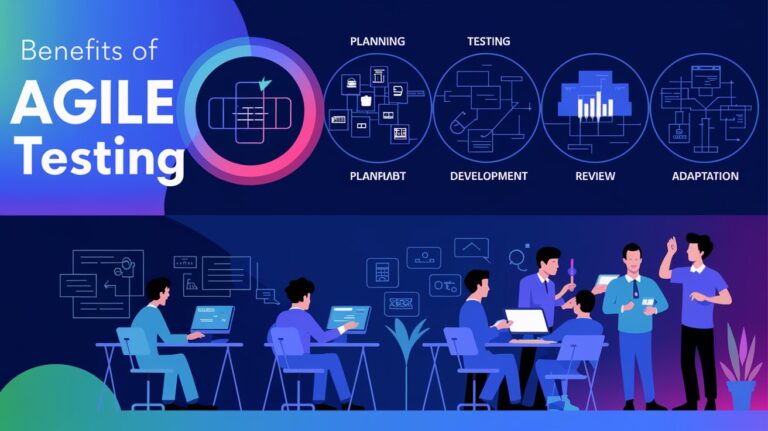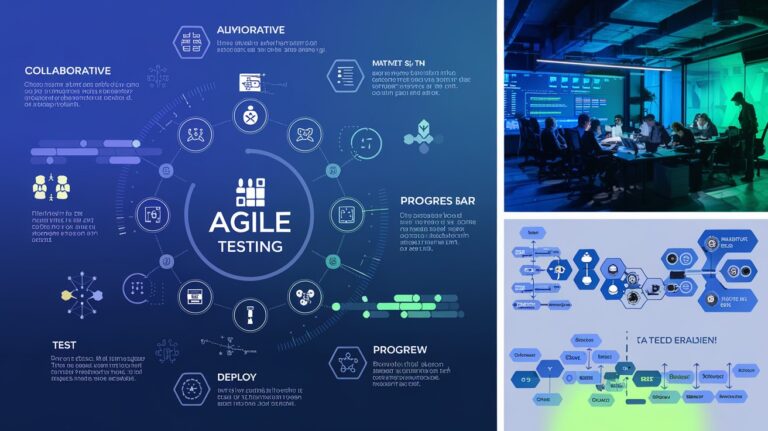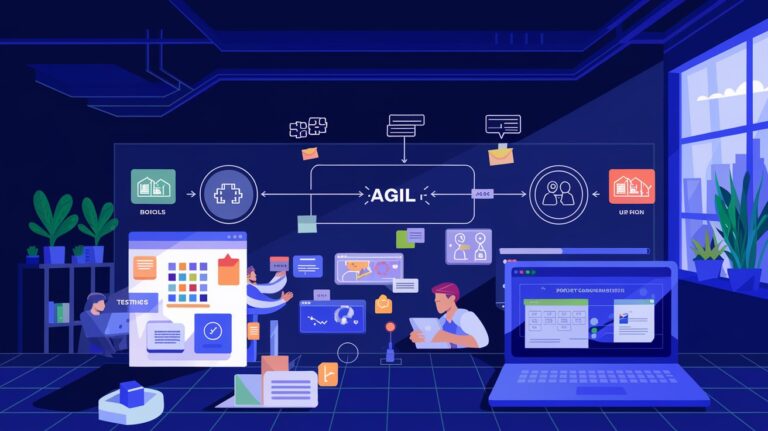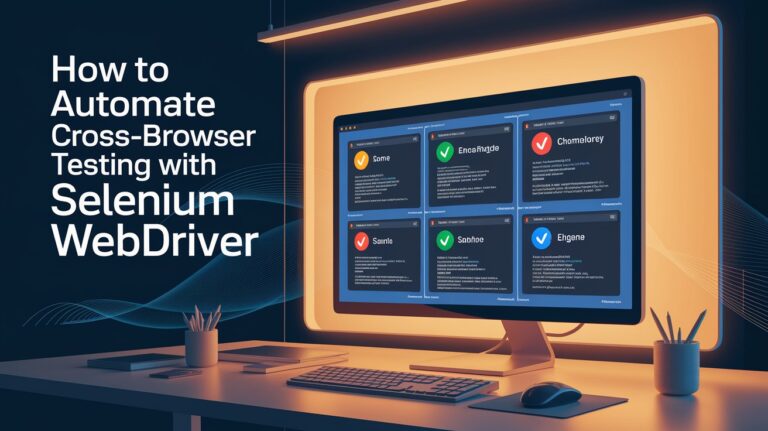In the fast-paced world of Agile development, testing must evolve to keep up with shorter release cycles, dynamic requirements, and continuous delivery demands. Agile testing strategies enable QA teams to adapt quickly while maintaining the highest quality standards. In this article, we explore the top Agile testing strategies that can accelerate QA delivery without compromising on quality.
Table of Content

- What is Agile Testing?
- Benefits of Agile Testing
- Top Agile Testing Strategies
- 1. Shift-Left Testing
- 2. Test Automation
- 3. Continuos Integration and Continous Testing
- 4. Exploratory Testing
- 5. Behaviour-Driven Development (BDD)
- 6. Collaborative Testing
- Best Practices for Agile Testing
- Challenges and How to Overcome Them
- Conclusion
What is Agile Testing

Agile testing is a continuous testing approach aligned with Agile development principles. Unlike traditional testing, which occurs after development, Agile testing happens alongside coding to provide early feedback and adapt to evolving requirements. Agile testers work collaboratively with developers, product owners, and stakeholders to ensure high-quality deliverables.
Benefits of Agile Testing

Faster Feedback Loops: Identifies issues early, reducing rework.
Improved Collaboration: Promotes teamwork between QA, developers, and stakeholders.
Higher Quality: Continuous testing ensures better defect detection and resolution.
Adaptability: Agile testing accommodates changing requirements seamlessly
Top Agile Testing Strategies

1. Shift-Left Testing
What is it? Shift-left testing involves starting activities earlier in the development lifecycle to identify and fix defects before they become costly.
How to Implement:
Involve testers in requirement discussions.
Use static code analysis tools for early defect detection.
Conduct unit and integration testing during development.
Benefits:
Reduces defect leakage.
Saves time and costs by catching bugs early.
1. Shift-Left Testing
What is it? Shift-left testing involves starting activities earlier in the development lifecycle to identify and fix defects before they become costly.
How to Implement:
Involve testers in requirement discussions.
Use static code analysis tools for early defect detection.
Conduct unit and integration testing during development.
Benefits:
Reduces defect leakage.
Saves time and costs by catching bugs early.
2. Test Automation
What is it? Test automation replaces manual testing for repetitive tasks, speeding up test execution and improving accuracy.
How to Implement:
Identify test cases suitable for automation, such as regression and smoke tests.
Integrate automated tests into CI/CD pipelines.
Benefits:
Accelerates testing cycles.
Ensures consistency and reliability.
3. Continuous Integration and Continuous Testing
What is it? Continuous Integration (CI) involves merging code frequently, while Continuous Testing ensures tests are run automatically with every integration.
How to Implement:
Set up CI tools like Jenkins, GitLab, or CircleCI.
Automate unit, integration, and UI tests.
Use reporting tools to monitor test results.
Benefits:
Faster feedback on code quality.
Reduces integration issues.
4. Exploratory Testing
What is it? Exploratory testing focuses on creatively exploring the application to uncover hidden defects and usability issues.
How to Implement:
Empower testers to use their experience and intuition.
Allocate time for exploratory sessions in each sprint.
Document findings to improve future test scenarios.
Benefits:
Uncovers edge cases.
Enhances user experience by identifying usability issues.
5. Behavior-Driven Development (BDD)
What is it? BDD promotes collaboration between developers, testers, and stakeholders by defining requirements in plain language.
How to Implement:
Use tools like Cucumber or SpecFlow.
Write test scenarios using Gherkin syntax.
Automate BDD scenarios to validate functionality.
Benefits:
Improves clarity and alignment of requirements.
Ensures testing is aligned with business objectives.
6. Collaborative Testing
What is it? Collaborative testing involves close cooperation between QA, developers, and product owners to achieve shared goals.
How to Implement:
Conduct pair testing sessions.
Use collaborative tools like Jira or Confluence.
Encourage knowledge sharing and joint test planning.
Benefits:
Enhances team communication.
Reduces gaps in understanding requirements.
Best Practices for Agile Testing

Early Involvement: Engage QA from the start of the project.
Focus on Automation: Prioritize automating repetitive tasks.
Adopt Agile Tools: Use tools like Jira, TestRail, or Zephyr for tracking and collaboration.
Emphasize Test-Driven Development (TDD): Write tests before coding to improve code quality.
Continuous Learning: Encourage testers to upskill in tools and methodologies.
Challenges and How to Overcome Them

1. Frequent Requirement Changes
Solution: Use flexible test strategies like exploratory and collaborative testing to adapt quickly.
2. Limited Time for Testing
Solution: Focus on risk-based testing and automation to maximize coverage in short timeframes.
3. Communication Gaps
Solution: Hold regular stand-ups and retrospectives to ensure alignment among team members.
4. Lack of Automation Expertise
Solution: Provide training for testers and leverage beginner-friendly tools.
Conclusion

Adopting Agile testing strategies is essential for delivering high-quality applications in today’s fast-paced development environments. By shifting testing left, leveraging automation, and fostering collaboration, QA teams can meet the demands of shorter release cycles while ensuring robust product quality.
Are you ready to implement these Agile testing strategies in your next project? Please share your thoughts and experiences in the comments below!















